After landing at Paro Airport, the most dangerous airport in the world, I hit the ground running to start exploring Bhutan! Right away, I loved the chilly temperature—it was about 45 degrees Fahrenheit, but the sun was shining. I met up with my guide and driver outside the airport. I had been dreaming of visiting Bhutan my entire life, so I was super excited. First up, I’d go on a traditional Bhutanese food tour as we made the drive from Paro to Punakha, Bhutan!
Tsheten, my guide from MyBhutan, presented me with a beautiful, white welcoming scarf before we set off to the town to get some breakfast with our driver, Nidup. We arrived in Paro town, where I saw lots of beautiful, traditional buildings and handicraft markets. We started our traditional Bhutanese food tour at Champaca Café, where we would have some momos!
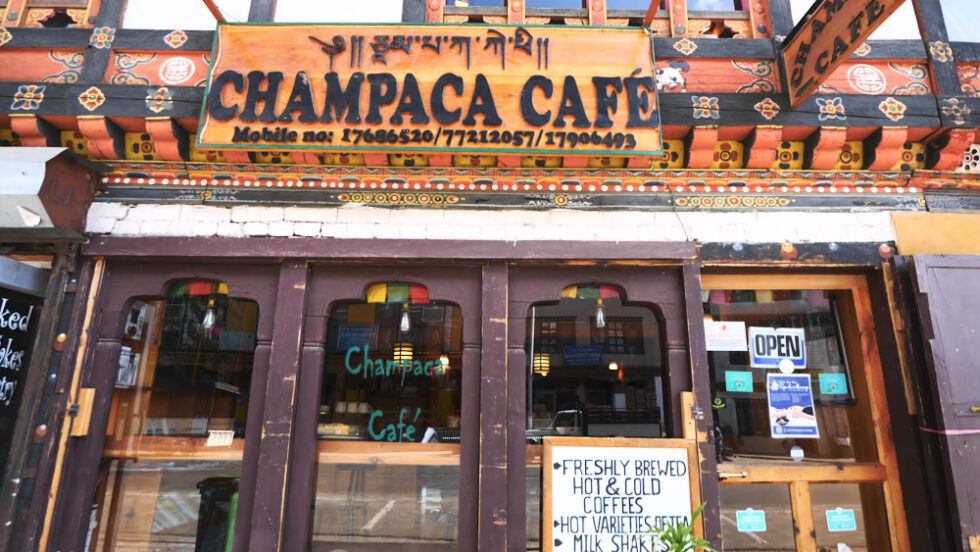
It was a really nice, comfortable café that was a mix of traditional and modern. I loved the low couches. While we waited on our order, Tsheten told me a bit about traditional Bhutanese dishes. They have non-veg momos that contain chicken, beef, or pork. Their veg momos contain potatoes or cheese. The cuisine here is characterized by lots of spice and cheese! Their national dish is a chili and cheese mixture called ema datshi!
We started our Bhutanese food tour with some salted butter tea called suja. It’s very buttery and tastes quite salty, too. It tastes like a soup because it’s very thick, creamy, and piping hot. Then, we got two types of momos: cheese and chicken with a spicy chili paste called ezay.
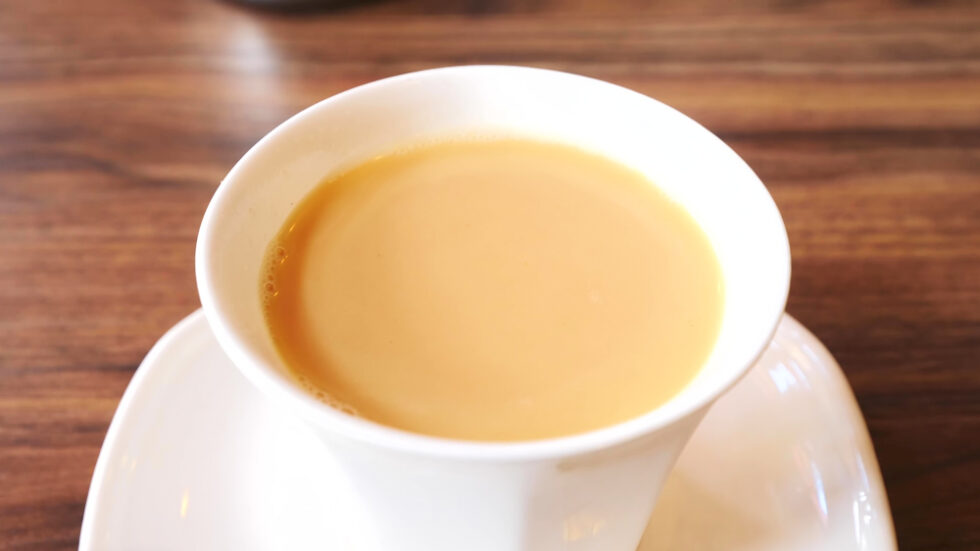
The longer momos contained cheese. The cheese is processed and the ezay was creamy but not too hot at first, but it crept up on me later! The chicken momo was really nice. It was an amazing breakfast and an awesome way to start my time in Bhutan!
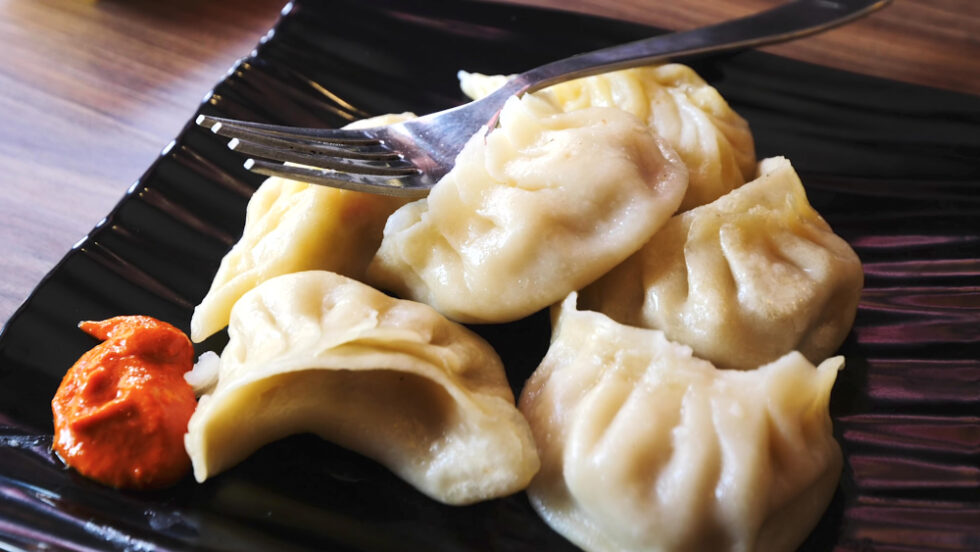
Next, we had a three-hour drive ahead of us. Everything is so spread out because it’s a mountainous country. My entire trip would take place on the western side of the country. You need at least 3 weeks to see the whole country. From there, we headed inside a shop to buy me a hat, as mine was way too hot. I got a beanie that had the Bhutanese flag on it. The shop also sold some beautiful Bhutanese masks!

We followed a winding road that passed through towns and around mountains. We passed the Paro River, farmland, and some rice paddy fields where they grow red rice. The views were incredible. As we continued, I got out to get a stunning view of the river and the gorgeous landscape around it.
We stopped again at a small stand selling a dry yak cheese on strings called chogo. This traditional Bhutanese food was really hard and was similar to a kind I’d had in Uzbekistan. It was pretty good, but I had to let my saliva soak into it to soften it up. They also sold tea leaves, roasted rice, drinks, dried chilies, and more. Then, I tried an even harder type of chogo, which I sucked on as we continued driving toward Punakha.

Seventy percent of Bhutan’s landscapes are trees, while 30% are rocky mountains. We arrived in Thimphu and rode along the only 4-lane expressway in Bhutan. Thimphu is a big city with about 100,000 residents. There were lots of buildings built in the new style. We reached 3,150 meters above sea level, where the road got even windier as we continued through the mountains.
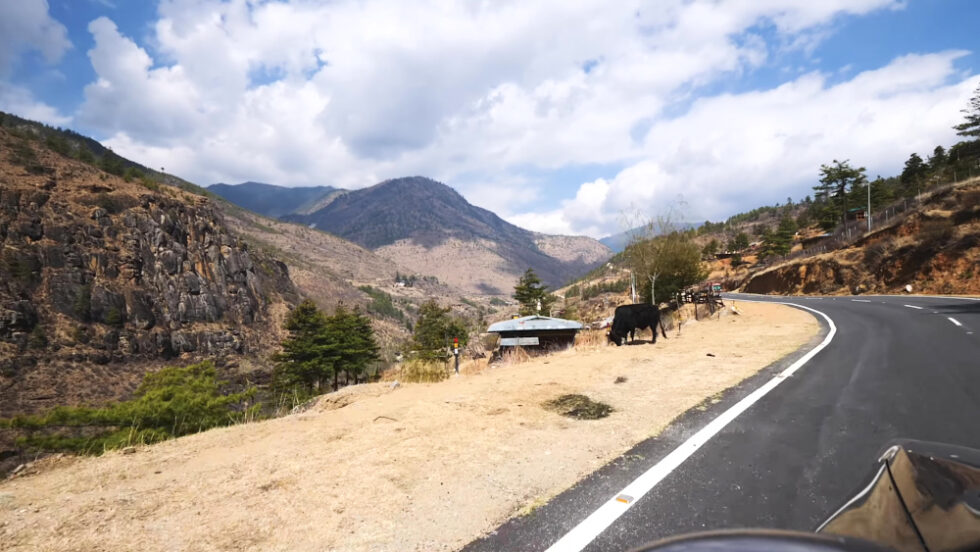
We passed a bunch of poles with prayer flags on them. As we continued, it started to snow! We stopped at the Druk Wangyal Khang Zhang Chortens, a memorial of 108 stupas in Dochula Pass. They were built in 2004 to honor Bhutanese soldiers who died fighting Assamese insurgents from India in 2003. On clear days, you can see the Himalayas from the memorial. There’s one huge stupa at the top of the hill, and the other smaller ones are on the hillside. All 108 have a Buddha inside them and some script painted on them. 108 is an important number in Buddhism.

From there, we had a 20-minute drive left. There were so many prayer flags draped across the sides of the road. I saw huge bunches every few minutes. They’re blown by the wind and bless the passersby.
This area of Bhutan was different from Paro. It was lots of forest! We arrived at a traditional spot called Menchuna Restaurant, where we continued our traditional Bhutanese food tour. There was a stupa out front. Inside, it was a traditional wooden restaurant with a souvenir shop to the left and a dining hall to the right. There were traditional Bhutanese embroidery and masks on the walls. On the buffet, they had cabbage, noodles, chicken with chilies, mixed vegetables, and spinach. I got my food a la carte and had dried fish with chilies, dried pork with radish and chilies, ezay, squash with chilies, and the chicken from the buffet.
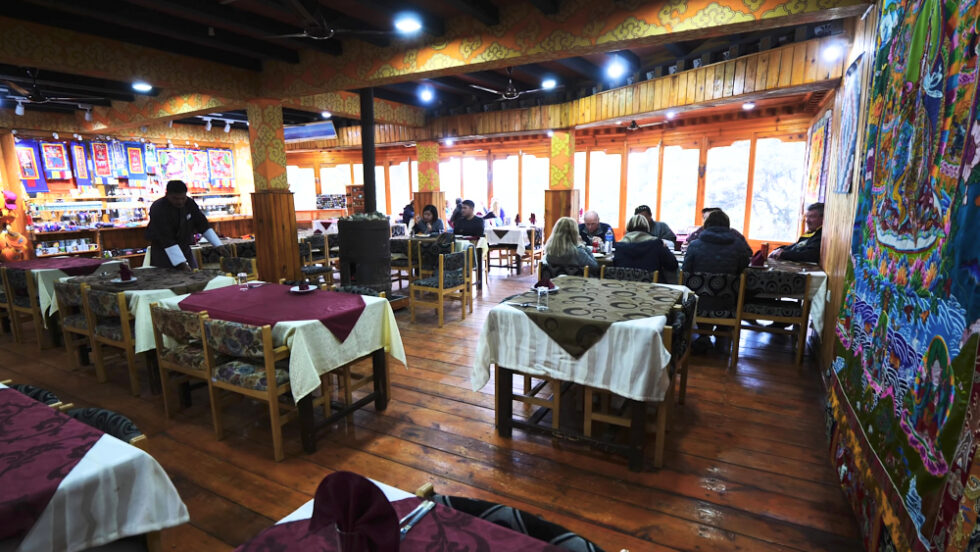
The ezay, like a lot on this Bhutanese food tour, was really hot. I grabbed a bit of everything. It all looked incredible! I mixed some ezay into the red rice. The squash was spicy and delicious and had a meaty texture. The radish with the fatty pork was unreal. The pork was crispy on the outside and very thick. It reminded me of some of the pork dishes I ate in Meghalaya, India.
The dried fish was good, but it contained lots of bones, so I had to be careful with it. It was dripping with oil. I’d never had fish like this! The chili paste with the long beans were also amazing. It had my mouth tingling. This food was super spicy! My favorite was the squash, which was like a glazy stir-fry. I loved the flavors of everything together.
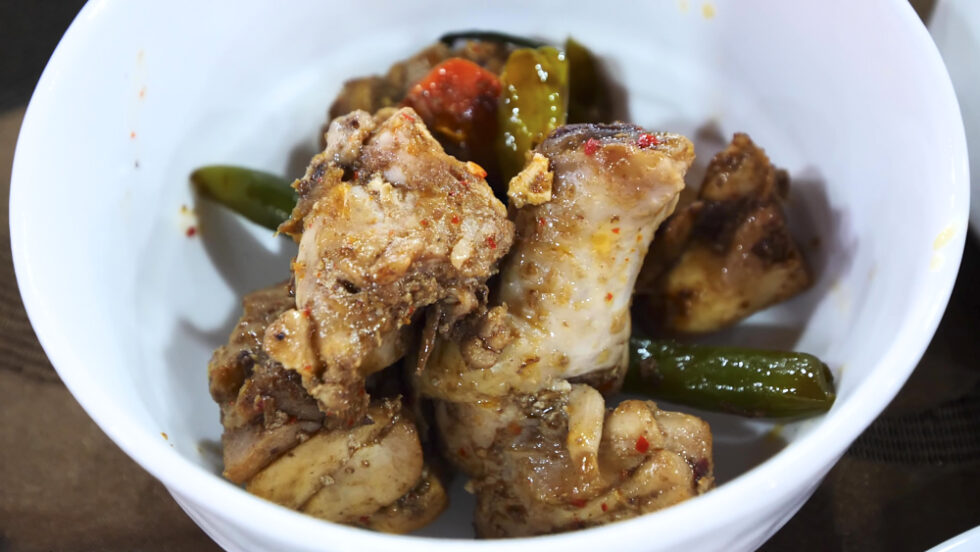
Then, I tried a special VIP dish that’s only made during special occasions, like the Punakha Festival. It’s made from rice, coriander, egg, and chilies. Next to it, I had more suja, which you enjoy with it. The rice dish was like a fried rice, while the suja tasted like pure butter. Then, I added some ezay to the rice, which made it much spicier and tastier!
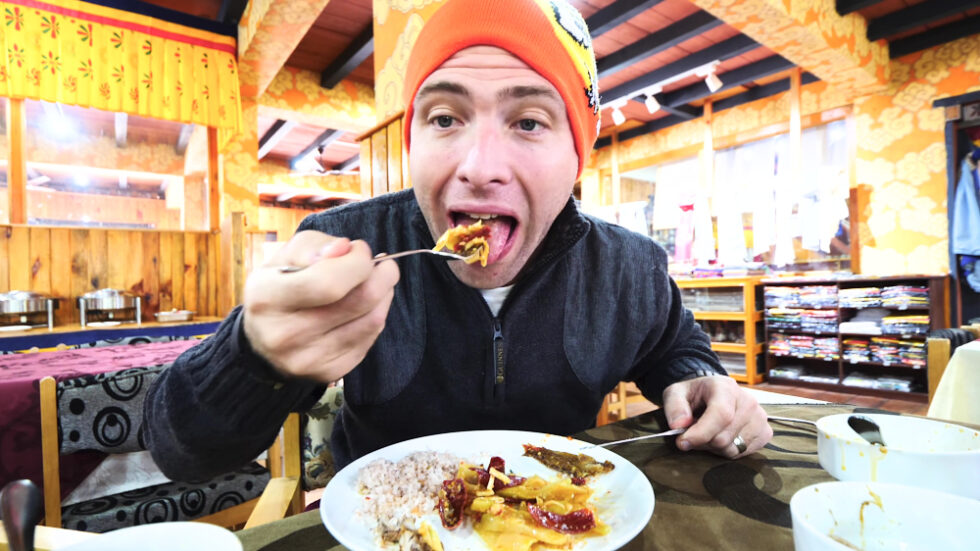
What an awesome traditional Bhutanese food tour! If you liked coming with me, please give this video a thumbs up, leave a comment, and subscribe to my YouTube channel. I’ll see you in the next travel/food adventure somewhere around the world!
Counter
101 Countries • 1432 Cities